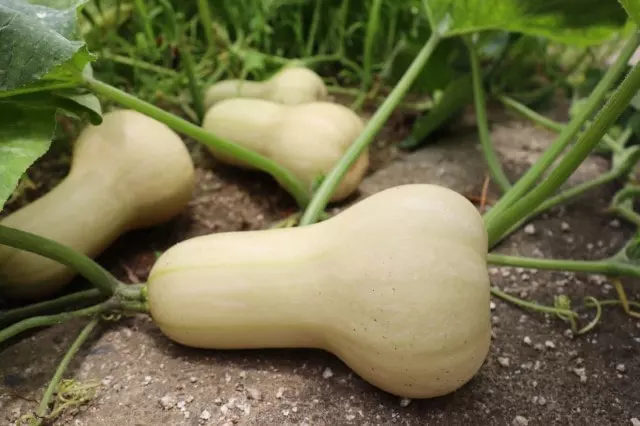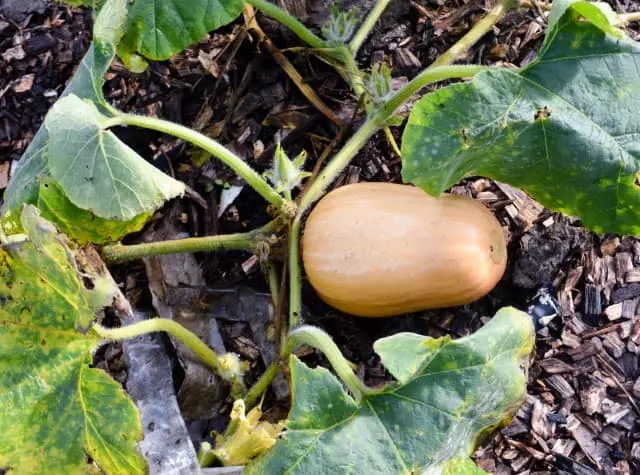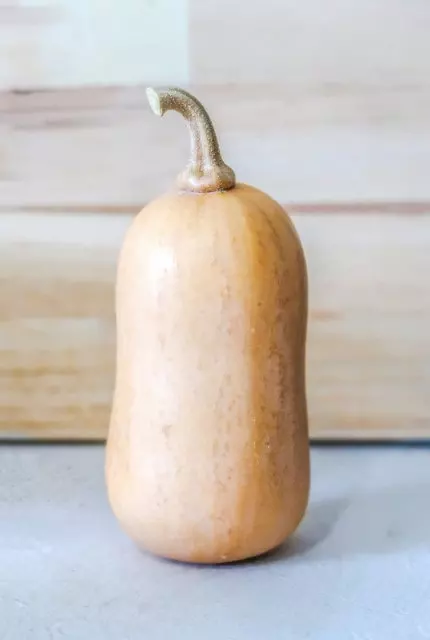Butternut squash is a type of winter squash that is very rich in minerals and fiber. It takes a little over 100 days to pick butternut squash, but it’s really worth the wait for the flavor. Butternut squash is one of my favorite squashes and the one I eat most regularly. Learn how and when to pick butternut squash correctly.
Table of Contents
When to Pick Butternut Squash
When to Pick Butternut Squash? You should be able to pick butternut squash when the skin is hard to the touch, you cannot puncture the skin of the butternut squash with your thumbnail. You will also notice that the butternut squash will have a uniform tan color.
Butternut squash usually takes approximately 100 to 130 days to mature, this will vary depending on the amount of sun and water the butternut squash plant has received.
You can let butternut squash mature until late September or October (Northern Hemisphere) but you should pick the butternut squash before the first frost.
The thick skin on the butternut squash will help it store better throughout the winter and can be consumed at any time.
We store our butternut squash in the garage throughout the winter and consume it as needed. Butternut squash should be stored for 2 to 3 months without any problem.

How to Pick Butternut Squash
How to Pick Butternut Squash? The first thing you need to pick butternut squash is a sharp, disinfected knife to make a perfect cut and not damage the vine. It is very important to use a sharp knife to avoid damaging the vine so that it can continue to produce as long as possible.
When you see that the butternut squash has a thick skin and a uniform color, proceed to pick the butternut squash. When picking butternut squash, leave a 1″ to 2″ (2.5 to 5 cm) stem on each squash. A short stem can allow bacteria to enter the butternut squash and cause it to rot, so always leave a long stem when picking butternut squash.
Once picked, butternut squash needs to be cured to be stored for 2 to 3 months. Below, we will explain how to cure and store butternut squash correctly.

How to Cure and Store Butternut Squash
How to Cure and Store Butternut Squash? For proper storage of butternut squash, it must first be cured, this will allow for longer storage time. Place the butternut squash in a place that has a temperature of 75 and 85 °F (24 to 29 °C) for two weeks. Make sure that where you place the butternut squash for the curing process has good ventilation and is free of insects.
After curing, store the butternut squash in a cool, dry place such as a garage or basement. A good temperature for storing butternut squashes is between 40 and 50 °F. (4 to 10 °C.) Never store butternut squash near other fruits such as pears or apples. When fruits ripen, they release a gas called ethylene, which shortens the storage life of butternut squash.
We hope this article on how and when to pick butternut squash will be helpful. We recommend our article about yellowing leaves on squash.

